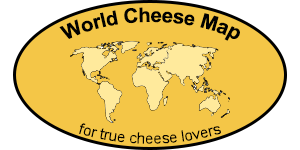Basic cheesemaking process described by the cheesemaker Biddy Fraser-Davies, the owner of Cwmglyn Farm (pronounced Coom-glin) situated in the North Island of New Zealand. Biddy has a small herd of Jersey cows and makes cheese by traditional methods.
Steps
- The cow’s udder is wiped to ensure cleanliness and to stimulate her to let down her milk.
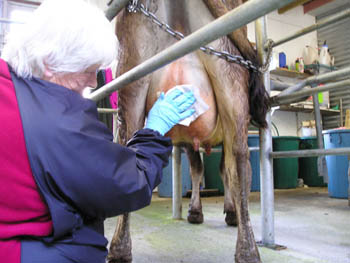
- The cups from the milking machine are attached.
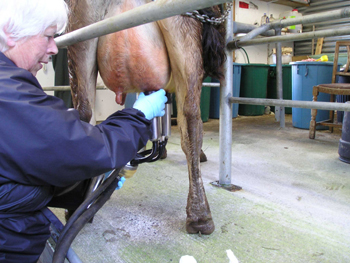
- The milk is poured from the collecting vat. The sieve is a precaution against solid contaminants.
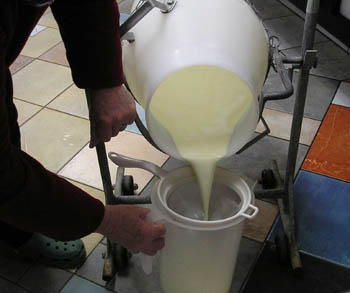
- The milk is now filtered.
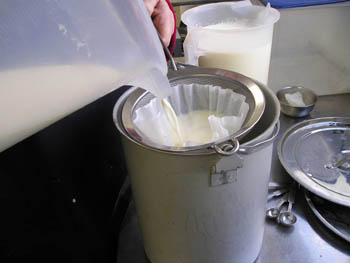
- [Pasteurization – may be omitted] The milk is heated in a water bath to 65 degrees Celsius and held there for 19 seconds.
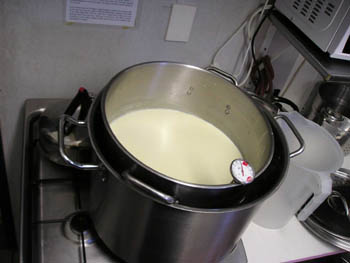
- The milk is cooled rapidly using cold water and frozen cold packs.
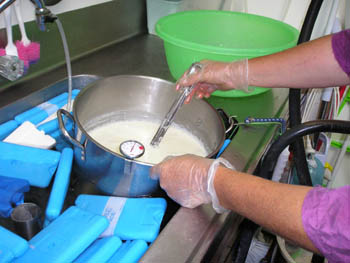
- A measured amount of freeze-dried cheese culture is added to the milk in the cheese vat.
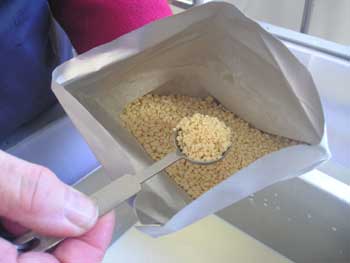
- The temperature of the milk is adjusted as required and the milk is allowed to stand for a measured time to allow the cheese culture to grow.
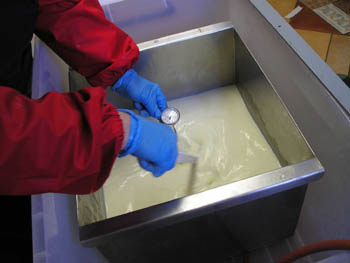
- Rennet is measured out. This is an extract from calve’s stomachs which causes the milk to curdle. For vegetarian cheeses a rennet-substitute of microbial origin is used.
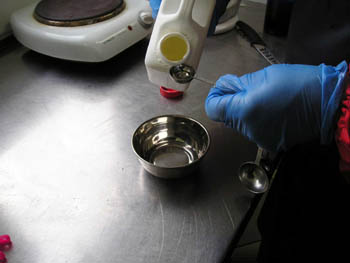
- The rennet is added to the milk with stirring.
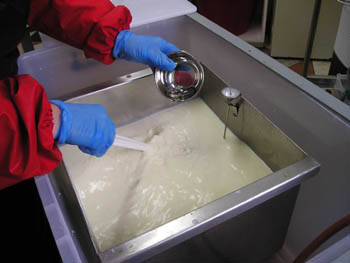
- After around 20 minutes the milk has set solid as the curd forms.
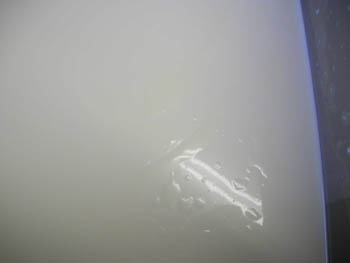
- The curd is cut with a knife twice at right angles.
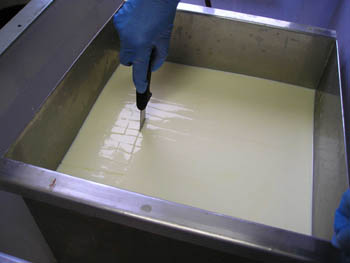
- The curd is now cut horizontally into cubes using a special curdcutter.
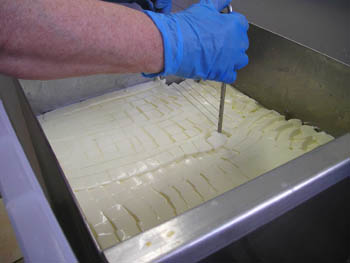
- The curd is stirred, holding it at the desired temperature for 45-60 minutes, until the pH has fallen to 6.2-6.1.
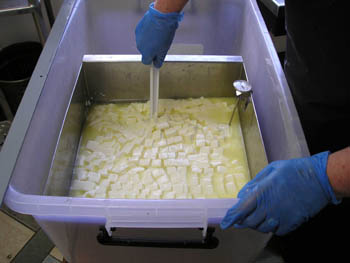
- The curd is separated using a colander and is kept warm (at 38 Celsius) while developing texture and the required pH. The colander is placed over a bucket of hot water and is kept covered to maintain the temperature of the curd.
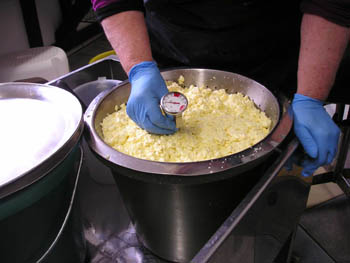
- The curd is cut into blocks for the cheddaring process.
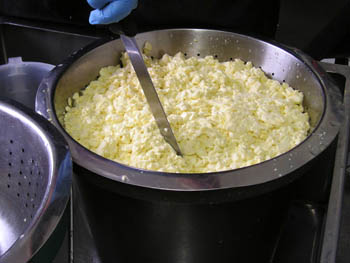
- Cheddaring – the cut blocks of curd are allowed to stand to allow acidity to contiue developing and to obtain curds of the required consistency.
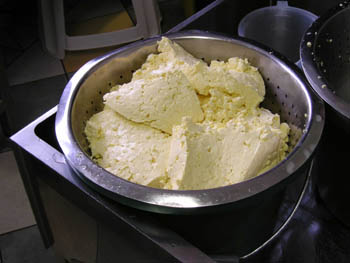
- A curd mill. This is a type of peg mill in which the curd is broken up by the fixed and rotating pegs.
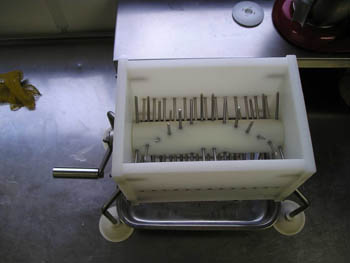
- Milling the curd using the curd mill. Sometimes the curd is passed through the mill a second time to obtain smaller pieces.
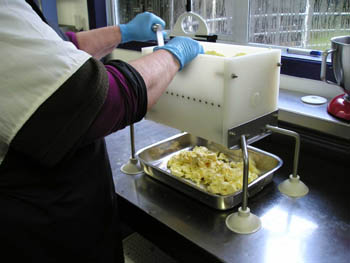
- Salt is added to the curd.
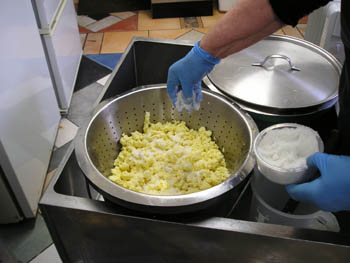
- The salt is mixed into the curd, a process naturally called “salting”.
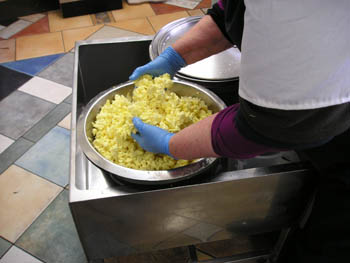
- The curd is scooped up and packed into a prepared mould, lined with cheesecloth. The inner section of a pasta-cooker forms a suitable mould.
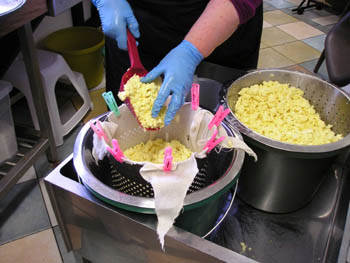
- The curd is packed into the mould.
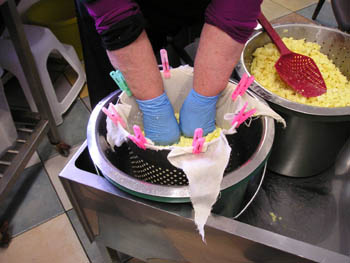
- The cheesecloth is folded over the curd and a “follower” is added.
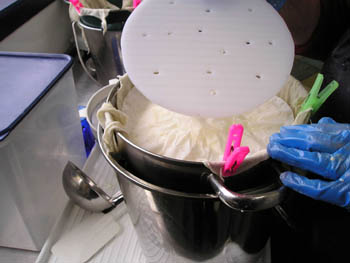
- The filled mould is placed in the press.
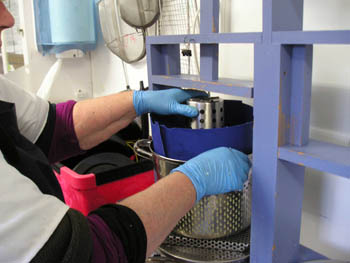
- The cheese being pressed. Extra weight is added as the excess whey is squeezed out of the cheese. The cheese is also removed from the mould after some hours, turned over and replaced in the press. This is done initially after 15-20 minutes and subsequently every 12 hours or so. This helps to obtain a uniform cheese with a smooth finish.
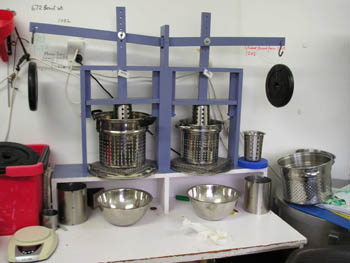
- This is a cheese being removed for turning.
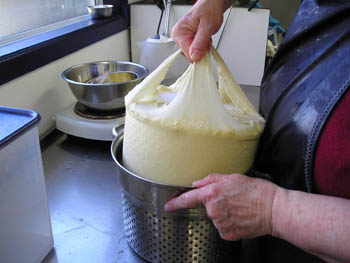
- A cheese after it has been pressed for the first time. It will be trimmed, turned over and returned to the mould. It will then be pressed for another day or two.
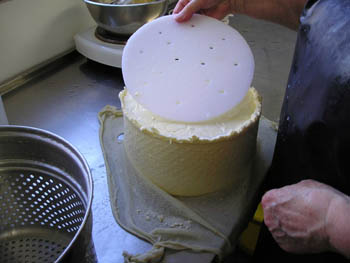
- A new cheese is removed from the mould after pressing has been completed.
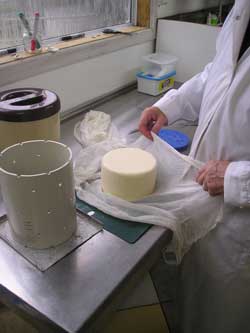
- New cheeses are air dried for several days and then coated with our own clarified butter. Nothing else is added.
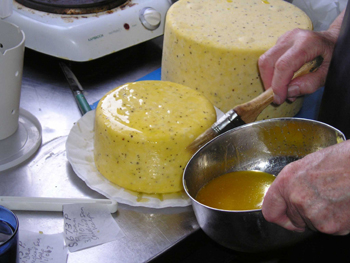
- The coated cheese is placed in our purpose-built cheese store. The temperature is maintained between 10 and 15 degrees Celsius with a humidity of 80%. A natural rind forms on the cheese.
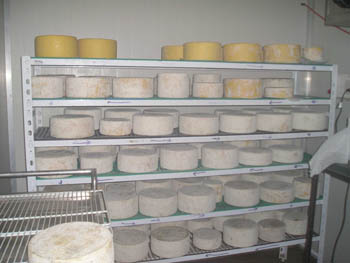
- To encourage a uniform rind and even maturing the cheeses are wiped and turned daily.
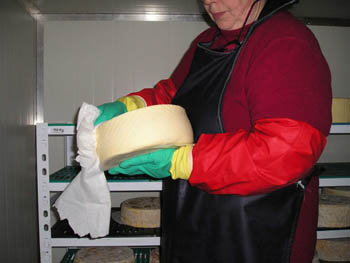
Click here to see more about Biddy’s farm and cheeses published on the World Cheese Map …
Credits: Biddy Fraser-Davies
